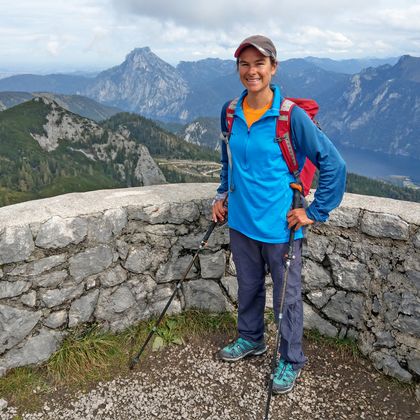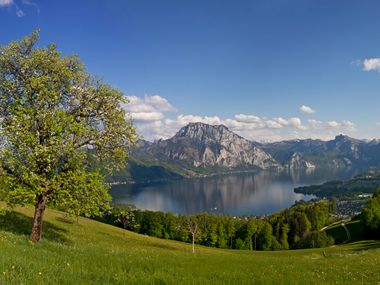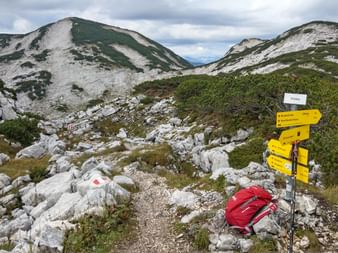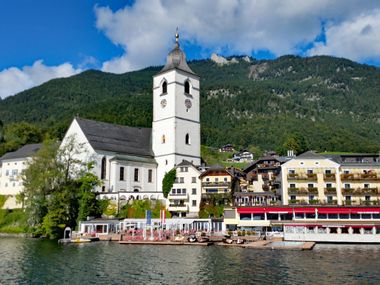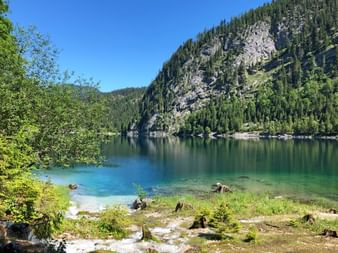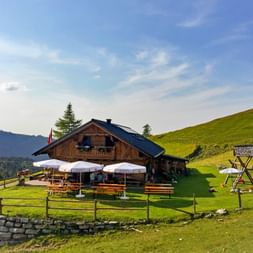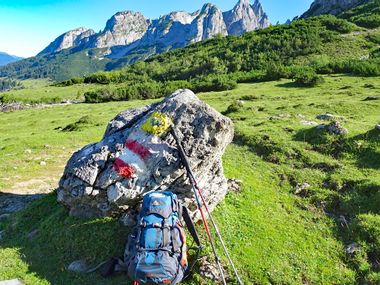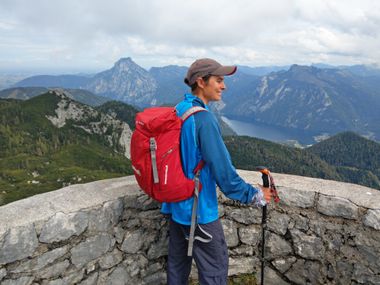Since I could get out of my pram, I’ve been walking the hiking trails of the Salzkammergut. I know almost every path and almost all of the peaks of my homeland, which for me is the most beautiful of all hiking regions. Of course there are also stunning landscapes in Tenerife, Norway and Sardinia, but if I could only choose one region, I would definitely pick the Salzkammergut. Because there is a fantastic combination of beautiful mountains and turquoise blue bathing lakes, a mix of lovely green alpine pastures and demanding high rocky peaks, loud chiming of cow bells and silent high plateaus. There are wonderful high-altitude trails and fantastic deep views of glittering water and there is super delicious Kaiserschmarrn (small pieces of pancake) with fresh milk in rustic mountain huts.
Travel report: Through the Salzkammergut from north to south


